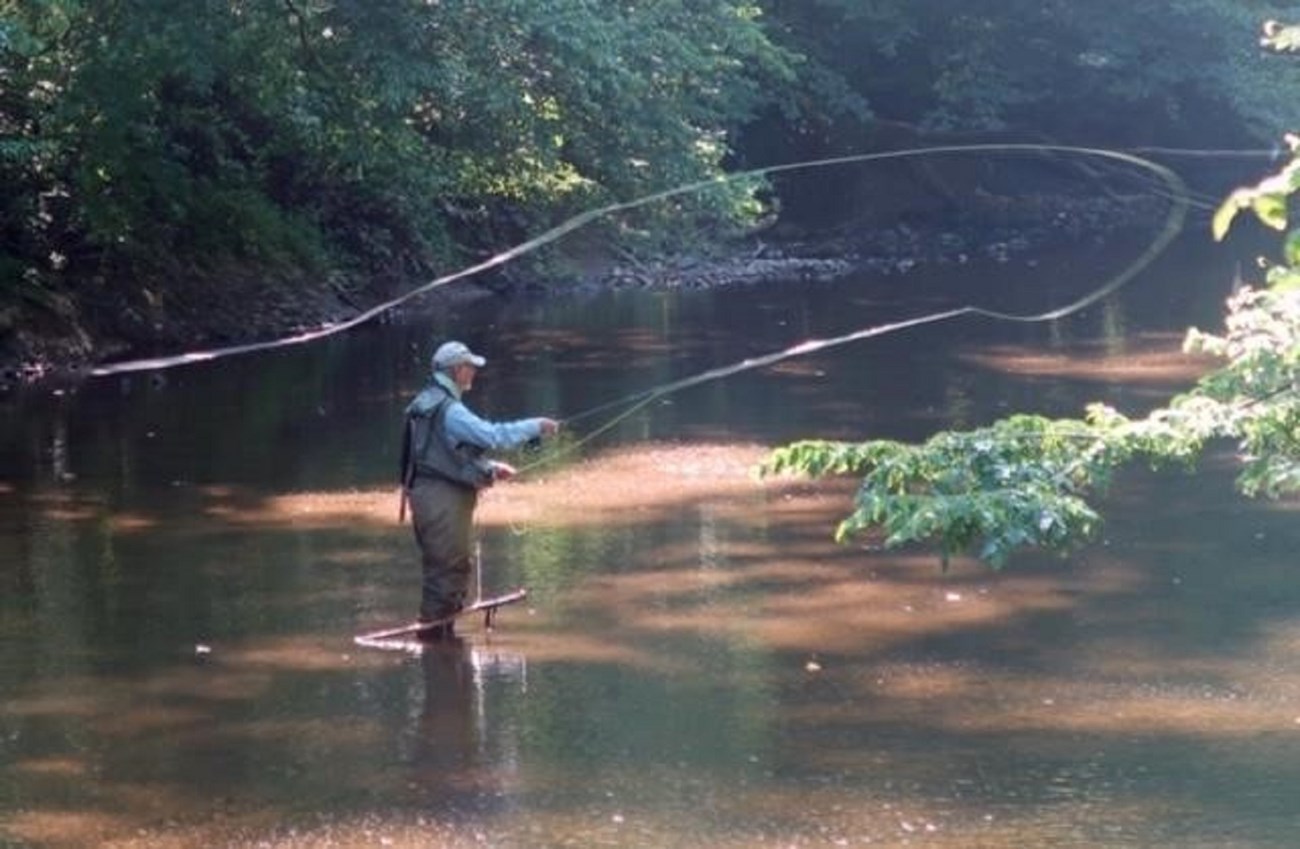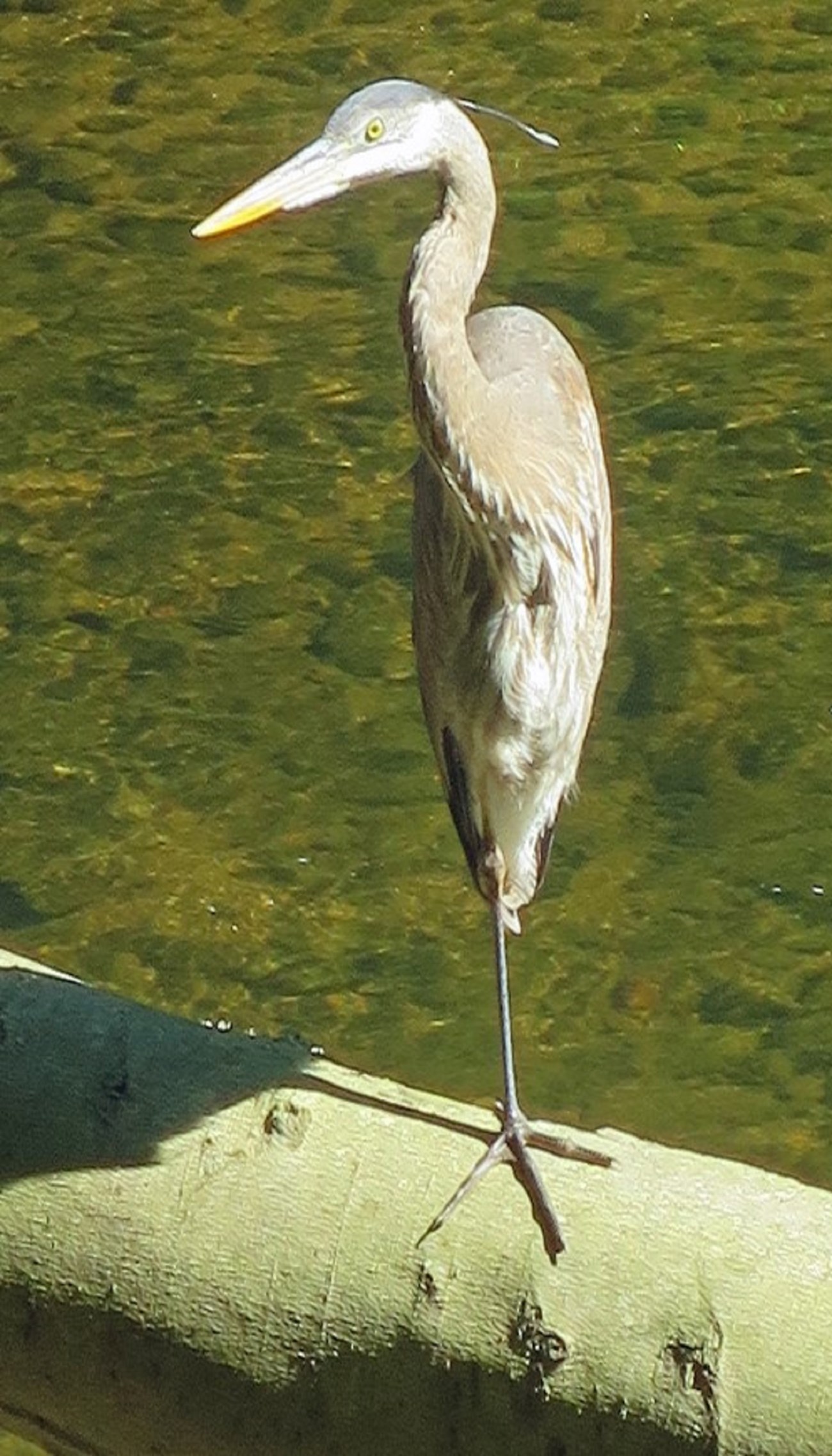Last updated: October 30, 2020
Article
Recreation | Fly Fishing: Casting More River Stewards
The whimsical dance of a fly fisher’s line is a sight many could watch for hours. Back and forth before landing the cast on the water’s surface, the line lingers over the river’s rush. For many fishermen and women, there’s much more to the art than catching a fish. These river stewards take in every aspect of their time in nature, from hiking along the river, to birding, to fishing until the last cast. White Clay Creek Wild and Scenic River is renowned for fishing opportunities, and according to those that frequent it, home to some of the most scenic and special fishing in the country.
As Delaware’s premier fly-fishing stream, White Clay Creek supports some 21 species of fish. Stocked annually by both Delaware and Pennsylvania, freshwater fisherman and women come to cast in the river’s pools and riffles throughout the year. Local fisherman, Ed O’Donnell, recalls how just a couple of years ago he met with people who had quite the ambitious goal. “There were a few people from Indiana and Michigan who wanted to fish in every state, and they chose the White Clay [in Delaware]. So if it’s a fly fishing area you want to go to, it’s the White Clay.” Long after tourists leave, you can still find people fishing on the water, hooked on the experience.
The White Clay Fly Fishers is a club that has been around since 1968 and has grown to over 180 members, making it the largest of its kind in the region.
“There’s nothing quite like catching your first fish… and it’s always the biggest one you’ll catch!” exclaims Doug Janiec, long standing member of the White Clay Wild and Scenic Management Committee and member of the White Clay Fly Fishers. As a lifelong fisherman, Doug has spent much of his time sharing his passion with others. Through the local fishing club, Doug teaches fly fishing classes to those curious about the sport. This year, instead of the usual group classes, Janiec and fellow fishing group member, Ed O’Donnell, have begun teaching fly fishing one-on-one.
O’Donnell, the Delaware co-chair for the White Clay Wild and Scenic Management Committee and fellow White Clay Fly Fishers member, joined us for an interview from his fly-tying room in Delaware. Ed has quite the reputation on the river. “There’s a pool that some friends of mine have named the ‘O’Donnell Pool’ because that’s where you find me all the time. It’s the deepest pool in the fly section. Well, there was one year that my daughter had her wedding in New York, so I had to miss opening day on a Saturday. I came back on a Monday and started fishing, and people were looking at me awful strange. Finally, someone said, ‘You’re alive!’… I asked, ‘What do you mean?’ They said that I wasn’t there opening day, so they just assumed that I must be dead,” Ed laughed recalling the story of the one and only time he missed opening day.

“What’s great about the White Clay is that it’s also quite the teaching stream. We take a lot of our students from our fly fishing club out there and teach them how to fish on that stream. The State Park in White Clay runs a lot of summer camps for children, and we teach them fishing in those summer camps,” explained Ed.
Doug continued, “Fishing is a lot of outreach. Not only does it teach you how to fish, but it teaches kids ethics, everything from picking up trash along the stream to how to behave around other people, how to be polite. It’s a lot more than just fishing.”
Kids of all ages, including those young at heart, have been students and members of the White Clay Fly Fishers. “We don’t [discriminate] between young and old, male and female, whatever. They’re big classes; we’ve had thirty people to a class…the thing about fishing and these classes is it’s not just fishing. When you’re out there, you’re bird watching, you’re hiking, you’re in the water, and fishing at the same time. And you can do it year round! This is a four-season hobby for people who are really committed to it,” said Doug.
Ed also sees the wholistic view of fishing. “When you’re out there, you’re almost like a canary in the mine. You can see things, you can spot problems that you can bring to the attention of State people. The Club has also made stream improvements like stream stabilization and habitat improvements for the fishery.”
The White Clay Creek is the first Wild and Scenic River in the United States designated on a watershed basis. As a designated watershed, the White Clay highlights the important interplay between preserved land and water quality. “What happens to the land affects the water. You have to be conscious of the development activity, what are the development practices, erosion control and sedimentation for example. A lot of it’s protected, but you can never have enough,” said Ed.

“Every year, two to four properties are acquired. The trail network is a high priority for State Parks and Townships, and they talk to one another and interconnect. Not only is it just acquisition and preservation, but it’s acquisition and connection of trail systems…so it all works together between the trails, preserved lands, and what happens with the water. There’s a lot of networking within this watershed,” explained Doug.
Fly fishing is one of the country’s oldest sports and brings with it a rich culture. For many people, this activity is more of a tradition and a lifestyle than a hobby. Fishing brings you a connection with not only the water, but other creatures that also depend on that water. As for Ed and Doug, it’s not necessarily about what you catch, but simply creating connections with White Clay Creek.
